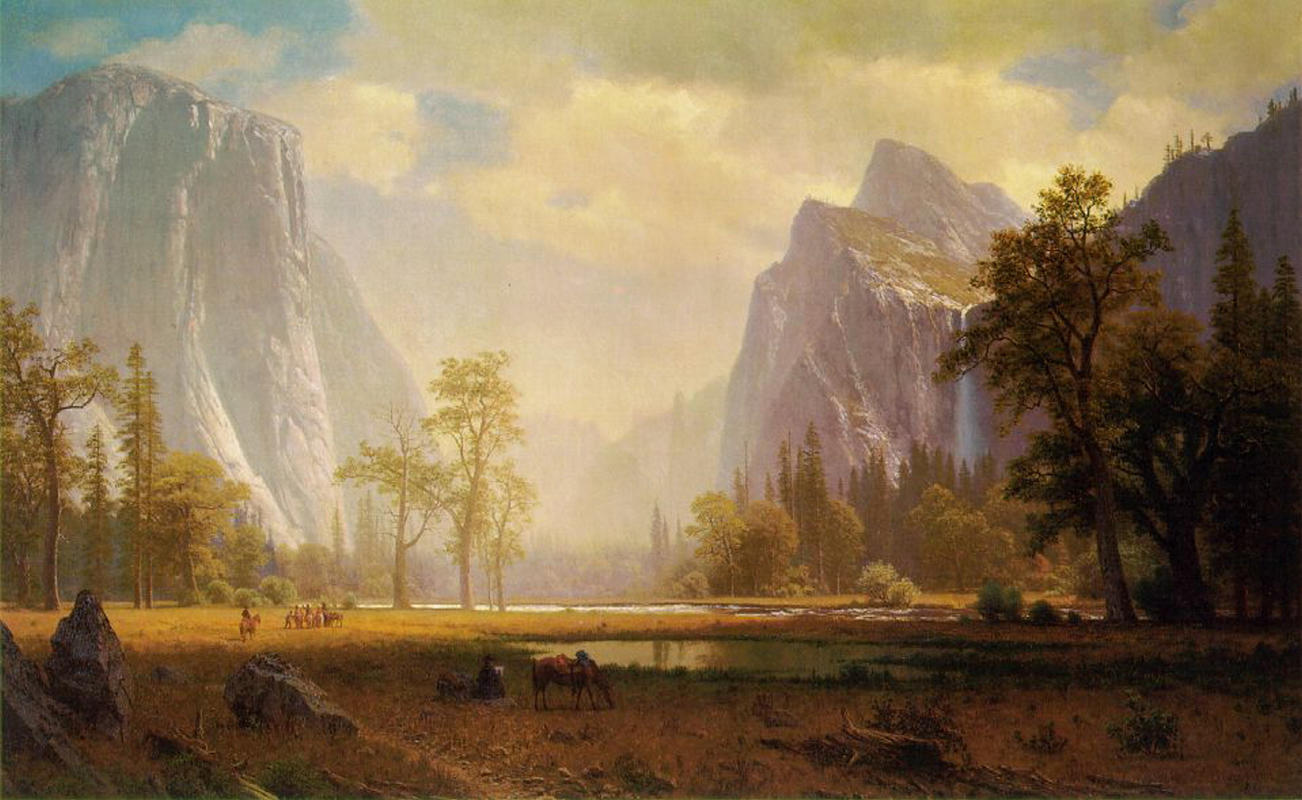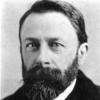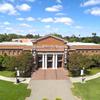More about Looking up the Yosemite Valley

Sr. Contributor
Albert Bierstadt loved to paint large-scale landscapes, especially scenes that really showed off the magnificence and grandeur of nature.
The Yosemite Valley was, and still is, perfectly suited for this; Bierstadt certainly seemed to think so, as he painted multiple scenes of Yosemite. Keep in mind, this was back in the days when Yosemite National Park did not yet exist and travel was a lot harder, so Albert probably had the place mostly to himself.
As far as “mostly” to himself goes, there were other people there, not including his travel companions, such as intrepid writer Fitz Hugh Ludlow, and two artists: Virgil Williams and Enoch Wood Perry, (whose painting, The True American, makes a statement regarding American politics that is just as relevant today as it was in 1874). Bierstadt painted the Yosemite Valley approximately 25 times, but very few of those pictures had any human figures in them; Looking up the Yosemite Valley is one of those that does.
The figures in the painting appear to be tourists or explorers, like Bierstadt and his party during one of his visits to the area. There is also a man sitting in the foreground working on a painting; maybe this is meant to be a mini self-portrait, but the person is not really identifiable. This isn’t surprising, since there are many more photographs of Bierstadt than there are painted images of him. Bierstadt enjoyed showing off the splendor of nature in his work, and the tiny figures in this piece help to give it some scale and showcase just how grand the Yosemite Valley is.
At the time of Bierstadt’s first visit to Yosemite, in 1863, there was very little infrastructure for visitors; a hotel and saloon were completed around that time, so there was at least a place to sleep and drink, other than next to the campfire. Several years down the road, the transcontinental railroad would be completed. This, along with stagecoach service, meant the Yosemite Valley would become much more accessible to visitors.
Bierstadt was not the only artist of his day who found Yosemite a fascinating and beautiful subject to paint; his contemporary, William Keith, was a fan as well. Keith, who painted many California scenes, including Yosemite Valley, was also a friend of John Muir, who would be instrumental in helping to establish Yosemite National Park. A few decades later, Ansel Adams would make Yosemite even more famous with his iconic black and white photographs of the many vistas of Yosemite.
Aside from this particular painting having human figures in it, it’s pretty similar to Bierstadt's other works featuring Yosemite. It’s actually kind of surprising that Bierstadt included the figures at all, because he really preferred to show his landscapes as completely untouched by man, even if that had not been the case for many years. (Native Americans had lived in the Valley long before any explorers came through). So, while Bierstadt’s work was not quite groundbreaking, he was the first artist to depict large-scale landscapes to the East Coast art-buying crowd and establish the wonders of the West as a relevant subject for artists.
Sources
- Baigell, Matthew. Albert Bierstadt. New York: Watson-Guptill, 1988.
- Bierstadt, Albert. “Sunset at Yosemite.” Museo Nacional Thyssen-Bornemisza https://www.museothyssen.org/en/collection/artists/bierstadt-albert/sun….
- “Fitz Hugh Ludlow.” Wikipedia. Wikimedia Foundation, March 17, 2022. https://en.wikipedia.org/wiki/Fitz_Hugh_Ludlow.
- Hendricks, Gordon, and Albert Bierstadt. Albert Bierstadt, Painter of the American West. New York: Harrison House, 1988.
- Sanders, Patricia. The Haggin Collection. Stockton, CA: Haggin Museum, 1991.
- Worster, Donald. A Passion for Nature: The Life of John Muir. Oxford: Oxford University Press, 2011.
- “Yosemite — the Embattled Wilderness.” National Parks Service. U.S. Department of the Interior. https://www.nps.gov/parkhistory/online_books/runte2/photo2-1.htm.











